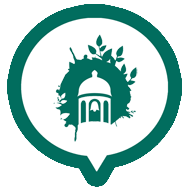This guide is designed to be taken around the town so that you can read or listen to a commentary about the different sights. A good place to start is by taking a walk through Storegade or Slotsallé, both of which lead to the Palace. The guide covers the entire old town, the Harbour, the Gardens, the Forest and most of the Augustenborg Path to Brovold.
The cemetery and some houses in Stavensbølgade are also included.
You can also find places to eat and to stay in the guide.
We will start the tour with a little about the history of Augustenborg:
The town was founded in 1651 by Duke Ernst Günther, who married his cousin, Augusta of Glücksburg. He named the town and the Palace after her. The first palace was completed in 1663.
From then on, Augustenborg was home to six generations of dukes, all of whom left their mark on the town.
The current Palace was completed in 1776 and is the largest and most complete baroque palace in Southern Jutland.
The ducal family fled in 1848 as a result of the First Schleswig War (1848-1851) and never returned to Augustenborg.
The town is a unique cultural environment that has emerged around Augustenborg Palace. It was developed as a small town populated by officials, merchants and craftsmen serving the court. The initial community was formed as early as the beginning of the 18th century, but even today the central part – Storegade and Slotsallé – is still dominated by a number of houses built over a short period from the 1760s to the 1800s.
There are 13 statutory listed buildings and 29 locally listed buildings in Augustenborg. In Storegade, they make up an almost intact row of very fine houses.
Many of the houses are still named after their first inhabitants – House of the Registrar, House of the Court Councillor, House of Ebeling, House of the Personal Chef to the Duke, etc.
Please enjoy exploring the town – the guide will help you along the way.
For more information about the guide, please click here.

